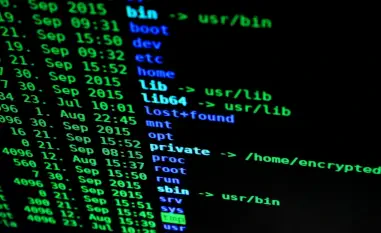Overview of a Growing Cyber Menace
In an era where digital warfare often outpaces physical conflict, a startling revelation has emerged: a Chinese state-sponsored hacking group, dubbed Salt Typhoon, has penetrated some of the most critical layers of US infrastructure, raising alarms across governmental and private spheres. This shadowy entity has not only breached military networks but also targeted telecommunications giants and vital sectors like energy and transportation. The audacity and scale of these cyberattacks signal a new frontier in national security challenges, compelling stakeholders to reassess the resilience of foundational systems.
This report delves into the intricate web of Salt Typhoon’s operations, uncovering the depth of its infiltration and the potential ramifications for the United States. With critical data stolen and vulnerabilities exposed, the urgency to fortify cybersecurity defenses has never been more pronounced. The following sections provide a comprehensive analysis of the threat, from specific targets and tactics to the broader implications for industry and policy.
Understanding the Salt Typhoon Cyber Threat
Salt Typhoon, identified as a Chinese state-sponsored hacking group, has emerged as a formidable adversary in the cybersecurity landscape. Its operations are characterized by a deliberate focus on undermining US national security through targeted attacks on essential infrastructure. The group’s ability to operate covertly and extract sensitive information poses a direct challenge to the stability of key governmental and economic systems.
The significance of this threat cannot be overstated, as it impacts critical sectors such as energy, transportation, and telecommunications, alongside military entities like the US Army National Guard. These sectors form the backbone of national functionality, and any disruption could have cascading effects on public safety and economic stability. Salt Typhoon’s actions are a stark reminder of the evolving nature of cyber warfare and the need for robust defense mechanisms.
Beyond domestic targets, the group’s reach extends globally, with documented attacks on Canadian entities alongside US organizations. This international scope underscores the complexity of combating state-sponsored cyber threats. Governmental bodies, in tandem with private sector partners, are increasingly prioritizing cybersecurity regulations and collaborative efforts to mitigate risks, recognizing that isolated responses are insufficient against such a pervasive adversary.
Scope and Scale of Salt Typhoon’s Attacks
Key Targets and Methods of Infiltration
Among the primary targets of Salt Typhoon is a US state’s Army National Guard network, which was compromised over an extended period in the recent past. This breach allowed hackers to access sensitive communications and administrative credentials, potentially enabling further incursions into connected systems. Such military targets are particularly concerning due to their role in state-level defense and emergency response coordination.
In addition to military networks, Salt Typhoon has struck major telecommunications providers like AT&T and Verizon, alongside critical infrastructure spanning 12 sectors, including water management and transportation. These attacks, occurring over several months, aimed to exploit systems integral to national operations, such as wiretap capabilities and traffic data collection. The breadth of these targets illustrates a strategic intent to weaken multiple facets of US stability simultaneously.
The methods employed by the group often involve exploiting known vulnerabilities in edge devices from companies like Cisco and Palo Alto Networks, with specific flaws such as CVE-2018-0171 being leveraged. Tactics have evolved to include data extraction of configuration files and the use of modified files alongside GRE tunnels to siphon information covertly. These approaches, while not novel, remain highly effective due to gaps in timely security updates and system hardening.
Impact and Data Insights
The scale of data stolen by Salt Typhoon is staggering, with reports indicating the extraction of 1,462 files from approximately 70 organizations across various sectors. This includes sensitive National Guard communications spanning multiple states and territories, highlighting the depth of penetration into military networks. Such data breaches could severely impair coordination during crises, posing a direct threat to national readiness.
Beyond the immediate loss of information, the potential consequences are far-reaching, with risks to state-level cybersecurity frameworks and the exposure of personally identifiable information of key personnel. This stolen data could be weaponized for future targeted attacks, amplifying the threat over time. The implications for privacy and operational security are profound, necessitating immediate action to safeguard affected systems.
Looking ahead, the persistent nature of Salt Typhoon’s operations suggests a trajectory of escalating attacks if vulnerabilities remain unaddressed. Projections based on current trends indicate that without enhanced defenses, the volume and sophistication of breaches could intensify. This forward-looking concern emphasizes the need for proactive measures to curb the group’s impact on critical infrastructure.
Challenges in Countering Salt Typhoon
One of the foremost obstacles in defending against Salt Typhoon lies in the delayed patch management and inadequate security measures prevalent in many targeted systems. Organizations often lag in applying updates to known vulnerabilities, providing hackers with windows of opportunity to exploit weaknesses. This systemic issue underscores a broader challenge in maintaining up-to-date cybersecurity practices across diverse sectors.
Another significant hurdle is detecting long-term intrusions, as Salt Typhoon has demonstrated an ability to maintain prolonged dwell times within compromised networks. Similar to other Chinese hacking campaigns like Volt Typhoon, which lingered in US electric grids for extended periods, these extended presences complicate efforts to identify and expel malicious actors. The stealth of such operations often delays response and mitigation, increasing the potential for damage.
Coordinating defense efforts across state, federal, and private sector entities presents additional complexity, particularly in managing cascading risks during crises. Disparate systems and varying levels of preparedness can hinder unified action, leaving gaps that hackers exploit. Strategies to overcome these challenges include bolstering vulnerability management practices and fostering enhanced threat intelligence sharing to create a more cohesive defense posture.
Regulatory and Security Response Framework
The current regulatory landscape addressing cybersecurity threats like Salt Typhoon involves significant collaboration between the Department of Defense and the Department of Homeland Security. These agencies are working to establish protocols that strengthen national defenses against state-sponsored cyberattacks. Their joint efforts aim to standardize responses and ensure that critical infrastructure remains protected under federal oversight.
In response to specific breaches, the National Guard Bureau has initiated thorough investigations into the scope of intrusions, alongside implementing stringent security protocols to limit further damage. These measures are designed to reinforce compromised networks and prevent additional data loss. Continuous monitoring and updates to existing systems are part of this ongoing effort to restore trust and functionality.
Compliance with federal cybersecurity standards remains a cornerstone of these initiatives, with an emphasis on public-private partnerships to enhance overall resilience. Regulatory changes are pushing industries to adopt more rigorous security practices, influencing how infrastructure protection strategies are developed and executed. This evolving framework seeks to balance innovation with the imperative of safeguarding national assets against sophisticated threats.
Future Outlook of Cyber Threats from Salt Typhoon
As Salt Typhoon continues to refine its approach, the potential evolution of its tactics poses a significant concern, particularly the use of stolen data to orchestrate more complex attacks. The information already acquired could serve as a foundation for tailored intrusions, targeting specific weaknesses with greater precision. This adaptability signals a need for anticipatory defenses that evolve in tandem with emerging threats.
Emerging cybersecurity technologies offer hope in countering such risks, with innovations in threat detection and response mechanisms gaining traction. Market disruptors in the security sector, including advanced analytics and automated patching systems, could reshape how vulnerabilities are managed. Investments in these areas are critical to staying ahead of state-sponsored actors intent on exploiting systemic gaps.
Geopolitical and economic conditions, especially the dynamic between the US and China, will continue to influence the cyber threat landscape. Tensions in this relationship may drive further aggression in the digital realm, necessitating international cooperation to address shared vulnerabilities. Growth areas in cybersecurity, such as proactive defense mechanisms and cross-border alliances, present opportunities to build a more fortified global stance against such threats.
Final Reflections and Path Forward
The extensive analysis of Salt Typhoon’s cyberattacks reveals a sophisticated and persistent threat that has infiltrated vital US infrastructure, from military networks to telecommunications and beyond. The scale of data theft and the strategic targeting of critical sectors underscore a vulnerability that demands urgent attention. Reflecting on these findings, it becomes evident that the challenge is not merely technical but also deeply tied to coordination and policy gaps.
Moving forward, actionable steps include prioritizing stronger patch management to close existing loopholes swiftly and allocating increased funding for cybersecurity initiatives across both public and private domains. Establishing robust public-private collaborations emerges as a key solution to pool resources and expertise, ensuring a unified front against state-sponsored threats. These measures aim to fortify defenses and prevent future breaches from escalating into broader crises.
Additionally, exploring long-term investments in resilience, such as advanced training for cybersecurity personnel and the development of international frameworks for cyber defense, offers a promising direction. These considerations introduce a proactive mindset, focusing on building systems capable of withstanding evolving threats. The path ahead requires sustained commitment to innovation and partnership to secure national infrastructure against persistent adversaries.













